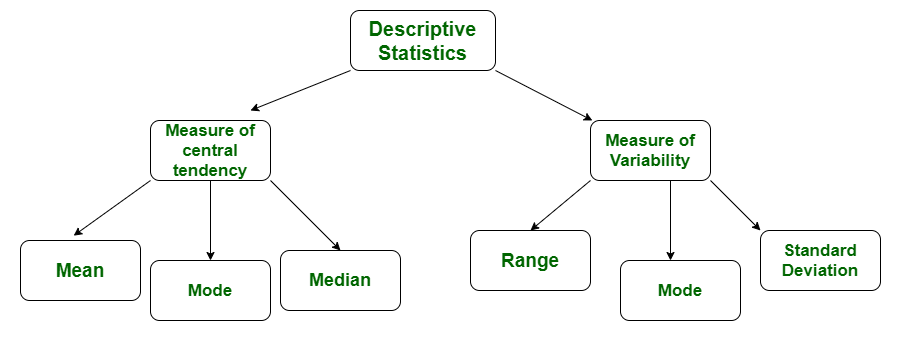
Descriptive statistics vs inferential statistics. Starting from the sample inferential statistics can now be used to make a statement about the population.

It is a simple way to describe our data.
Descriptive vs inferential statistics definition. Descriptive statistics use summary statistics graphs and tables to describe a data set. This is useful for helping us gain a quick and easy understanding of a data set without pouring over all of the individual data values. Inferential statistics use samples to draw inferences about larger populations.
Descriptive statistics describe what is going on in a population or data set. Inferential statistics by contrast allow scientists to take findings from a sample group and generalize them to a larger population. The two types of statistics have some important differences.
Descriptive statistics is a term given to the analysis of data that helps to describe show and summarize data in a meaningful way. It is a simple way to describe our data. Descriptive statistics is very important to present our raw data ineffectivemeaningful way using numerical calculations or graphs or tables.
This type of statistics is applied on already known data. Descriptive and inferential statistics are both statistical procedures that help describe a data sample set and draw inferences from the same respectively. The ScienceStruck article below enlists the difference between descriptive and inferential statistics with examples.
Descriptive statistics describes a situation while inferential statistics explains the likelihood of the occurrence of an event. Descriptive statistics explains the data which is already known to summarise sample. Inferential statistics allow you to use data to make predictions or inferences based upon the data.
This is in clear contrast to descriptive statistics. Rather than being used to describe the data itself inferential metrics are used to reveal correlation proportion or. Descriptive vs Inferential Statistics The difference between descriptive and inferential statistics is the way it looks at data.
The descriptive statistics describe the population whereas inferential statistics take a sample of people for a particular pattern and generalizes it with the whole lot. The use of descriptive statistics researchers has complete raw population data. Most of the researchers take the help of inferential statistics when the raw population data is in large quantities and cannot be compiled or collected.
The use of descriptive statistics is when sampling is not required. Descriptive and inferential statistics are two broad categories in the field of statisticsIn this blog post I show you how both types of statistics are important for different purposes. Interestingly some of the statistical measures are similar but the goals and methodologies are very different.
Descriptive statistics are used to describe the general conditions and characteristics of the data while inferential statistics are used to draw conclusions for the population based on the sample we have. Inferential Statistics - Define descriptive statistics and inferential statistics Descriptive statistics includes statistical procedures. Descriptive vs Inferential statistics Difference Definition with examples - Mean Median ModeThis video covers following Topics.
Descriptive Vs Inferential Statistics. Difference Between them with definition comparison - YouTube. The primary difference between descriptive and inferential statistics is that descriptive statistics measure for definitive measurement while inferential statistics note the margin of error of research performed.
Youll need to account for the deadlines you have for research and development to choose which statistic is more viable for you. Descriptive statistics definition is different with inferential statistics. Descriptive statistics only describes condition of the data through parameters such as mean median mode frequency distribution and other statistical measurements.
While inferential statistics conclude hypotheses based on sample data into population conclusion. Descriptive statistics and inferential statistics are the two main areas of statistics. Descriptive statistics provides tools to describe a sample.
Starting from the sample inferential statistics can now be used to make a statement about the population. Descriptive statistics vs inferential statistics.